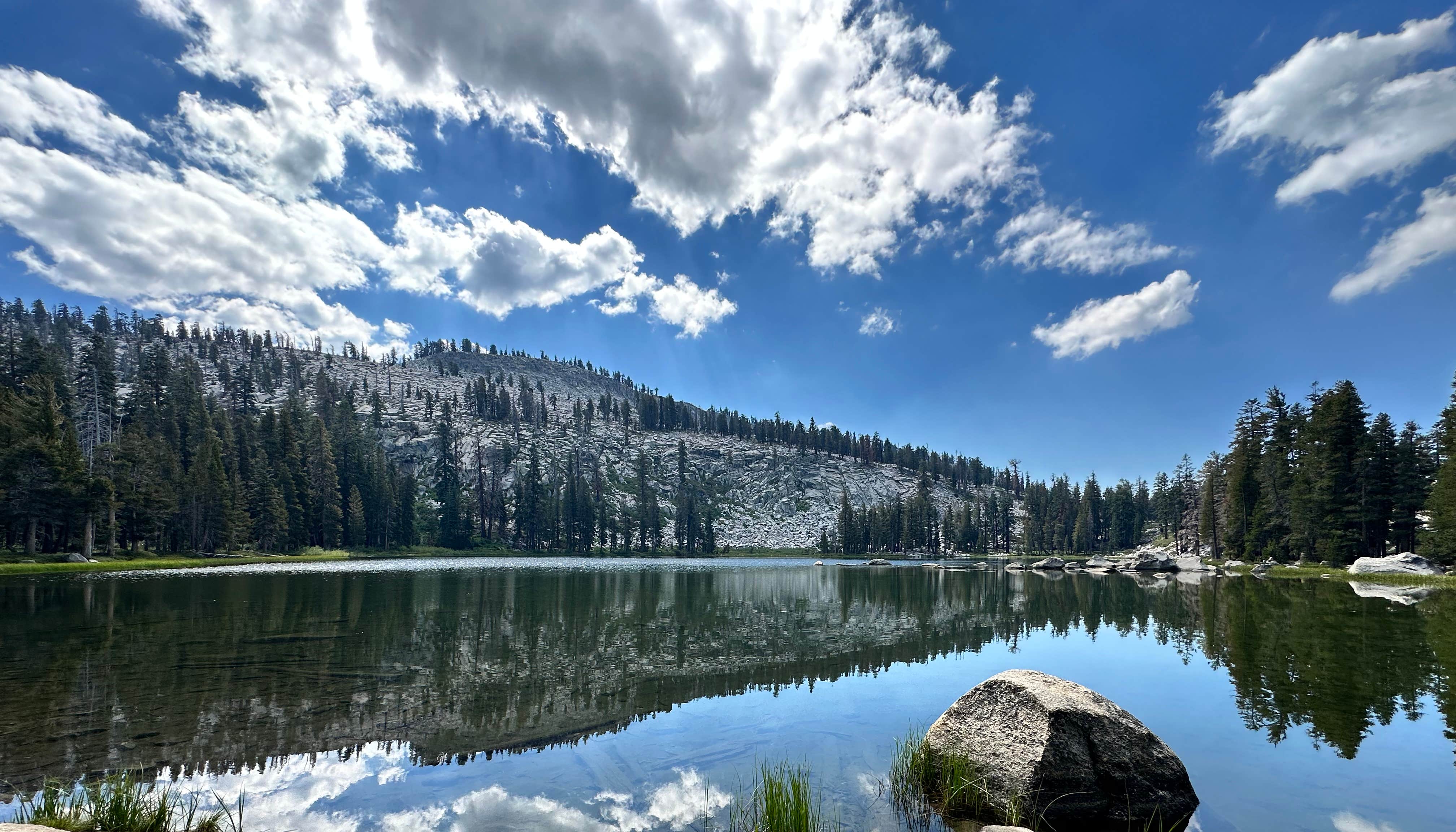Sequoia and Kings Canyon National Parks Camping Guide
Sequoia and Kings Canyon National Parks offer camping among giant sequoias, granite peaks, and deep river canyons across 14 campgrounds with roughly 1,200 sites spanning from 2,100-foot foothills to 7,500-foot alpine settings. These adjacent parks create distinct camping experiences: Sequoia's foothills campgrounds provide year-round access and riverside sites, while high-country options in Mineral King deliver remote wilderness camping. Kings Canyon's Cedar Grove area sits deep in one of North America's deepest canyons, offering dramatic granite walls and riverside camping. Grant Grove provides convenient access to massive sequoia groves with developed amenities. This guide covers everything you need to know about planning, booking, and enjoying a Sequoia and Kings Canyon camping trip, with practical advice from campers who've been there.
Sequoia and Kings Canyon National Parks Camping at a Glance
All Sequoia and Kings Canyon campgrounds require advance reservations during peak season, with booking windows typically opening one month in advance on Recreation.gov for standard sites. A total of 14 campgrounds span the parks' diverse elevations offering around 1,200 sites combined. Summer demand is extremely high; popular campgrounds like Lodgepole and Dorst Creek often fill within minutes of reservations opening. Buckeye Flat and other foothills campgrounds open earlier in spring and stay open later in fall, while high-elevation sites close with early snow. 2025 updates: Buckeye Flat Campground will remain closed for the season due to storm damage, but Potwisha (foothills) and Azalea (Grant Grove) continue to operate year-round. Dorst Creek Campground is scheduled to remain closed for a second season due to extensive tree hazards from past wildfires.
Sites range from $22 to $32 per night for standard family sites, with group sites up to $60-$70. Each campsite includes a picnic table, fire ring, and bear-proof food storage locker. No hookups are available in these national park campgrounds. Summer daytime highs can exceed 90 degrees in the lowlands, while nights in the high country dip into the 40s. Even during peak summer months, prepare for temperature swings of 40-50 degrees between day and night at higher elevations.
Sequoia and Kings Canyon National Parks Campground Quick Facts
| Quick Facts | Details |
|---|---|
| Number of Campgrounds | 14 developed campgrounds (7 in Sequoia, 7 in Kings Canyon) with approximately 1,200 total sites |
| Total Campsites | Over 1,200 sites total. Lodgepole: 214, Dorst Creek: 281, Azalea: 110, Sunset: 157 |
| Campsite Costs | $22-$32 per night standard sites; $60-$70 group sites |
| Reservation Platform | Recreation.gov (one-month rolling window, opens 15th at 7 AM PT for following month) |
| Camping Seasons | 2 campgrounds open year-round (Potwisha & Azalea); others operate late May through early September |
| Temperature Ranges | Foothills: Summer days 90-100°F, nights 60-70°F Mid-elevation: Summer days 75-85°F, nights 45-55°F High Country: Summer days 70-80°F, nights 35-45°F |
| Elevation Range | 2,100 ft (foothills) to 7,500 ft (Mineral King) |
| 2025 Updates | Buckeye Flat closed for storm damage Dorst Creek closed for tree hazard removal |
Sequoia and Kings Canyon Campgrounds: Complete Guide
Sequoia National Park - Foothills Area Campgrounds
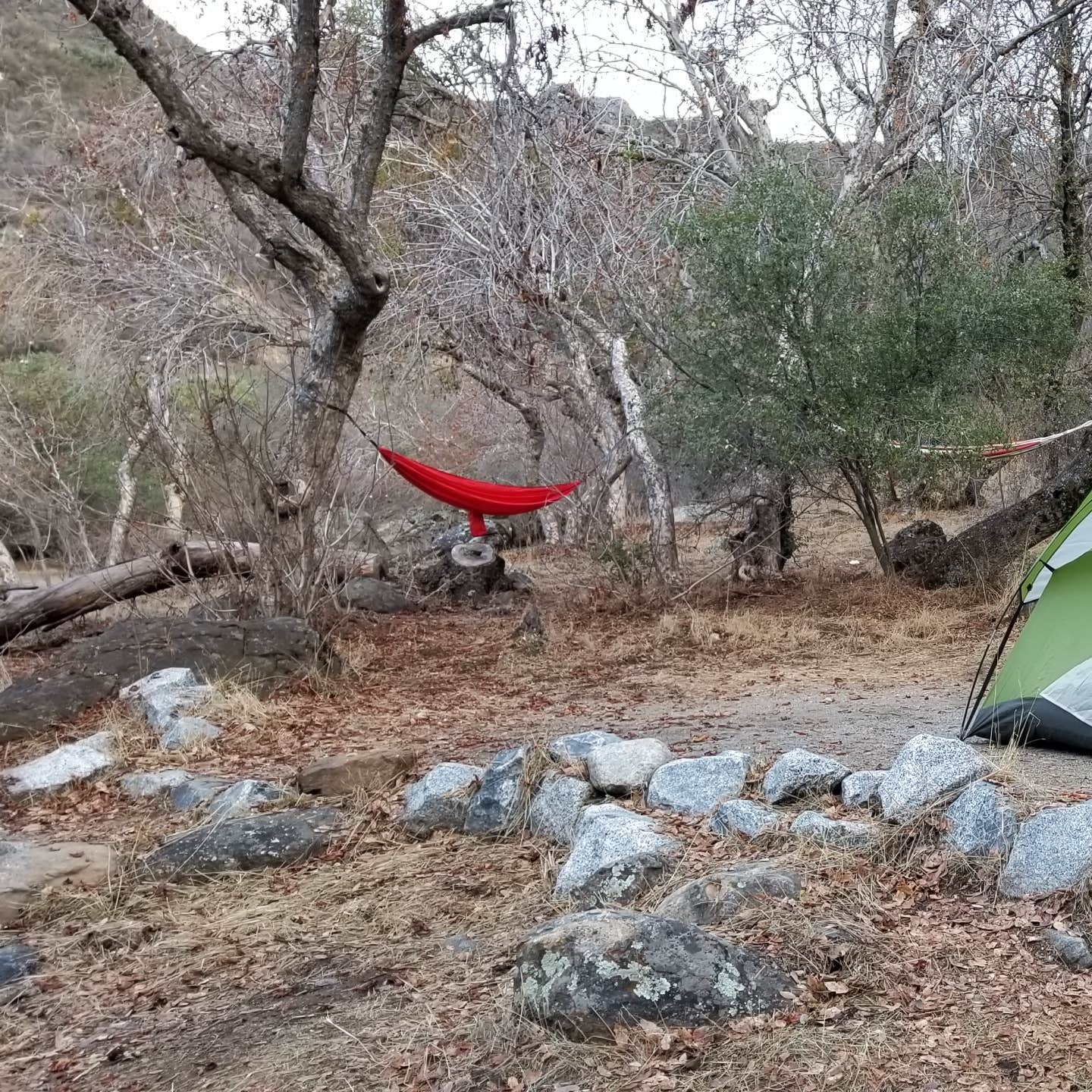
Potwisha Campground — Sequoia National Park
Potwisha Campground sits at 2,100 feet elevation near the Ash Mountain entrance of Sequoia National Park, offering 42 sites open year-round. This lower foothills campground provides warm winter camping and early spring wildflowers along the Middle Fork Kaweah River. Sites are paved and accommodate tents or RVs up to 24 feet (no hookups). Amenities include flush toilets, potable water, picnic tables, fire rings, and food storage lockers. A dump station is available nearby. Summer temperatures here regularly top 90°F, so shade from oak trees and the nearby river provide some relief. Reservations are required year-round due to high demand.
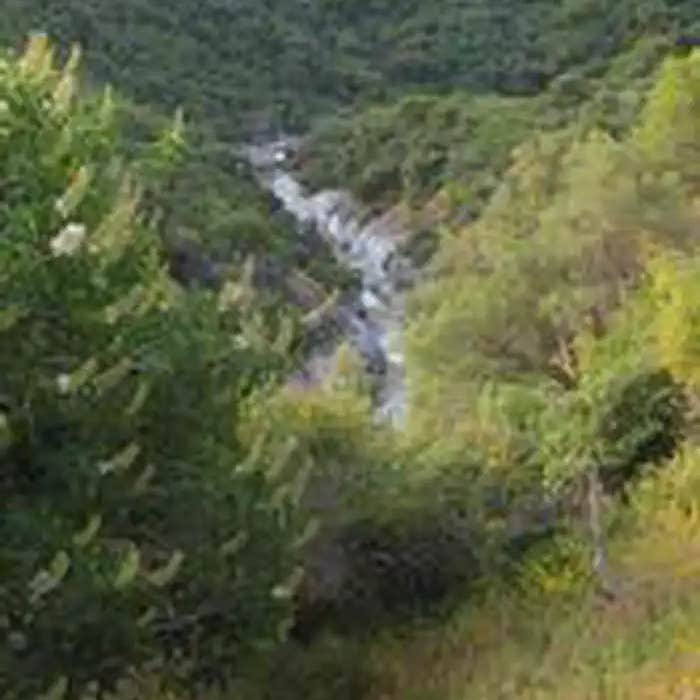
Buckeye Flat Campground — Sequoia National Park
Buckeye Flat Campground (28 sites) lies deep in Sequoia's foothills along the Middle Fork Kaweah River, about 7 miles from the park entrance. Tents only (no RVs/trailers) enjoy a tranquil setting among sycamores and oaks at 2,800 feet elevation. Each site has a picnic table, fire ring, and bear box, with flush toilets and water spigots centrally located. The river provides summer wading spots and soothing sound. Buckeye Flat normally operates from spring through fall (closed in winter); however, storm damage has closed it for 2025. When open, reservations are required and sites fill quickly for the intimate, scenic riverside experience.
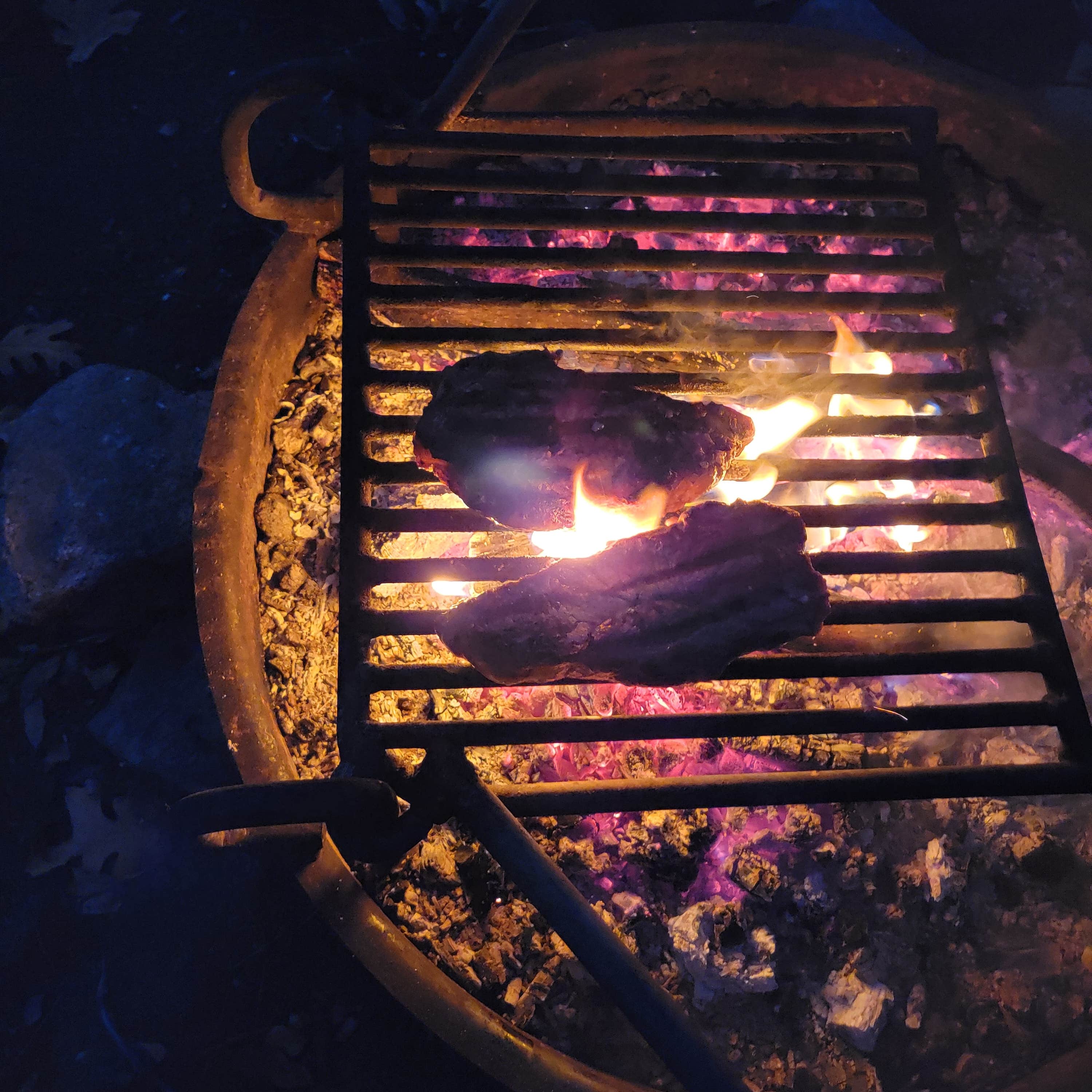
South Fork Campground — Sequoia National Park
South Fork Campground is a small, primitive 10-site campground in a remote corner of Sequoia's foothills, reached by a narrow 13-mile road from Three Rivers. Located at 3,600 feet along the South Fork Kaweah River, it offers a quieter, off-the-beaten-path experience. Sites are best for tents (no large RV access) and include picnic tables, fire rings, and bear lockers, but no potable water - campers must bring water or treat river water. Vault toilets are provided. Open year-round, South Fork is first-come, first-served and free to use, though a free fire permit is required for campfires. The road is rough, so high-clearance vehicles are recommended.
Sequoia National Park - Giant Forest and Lodgepole Area Campgrounds
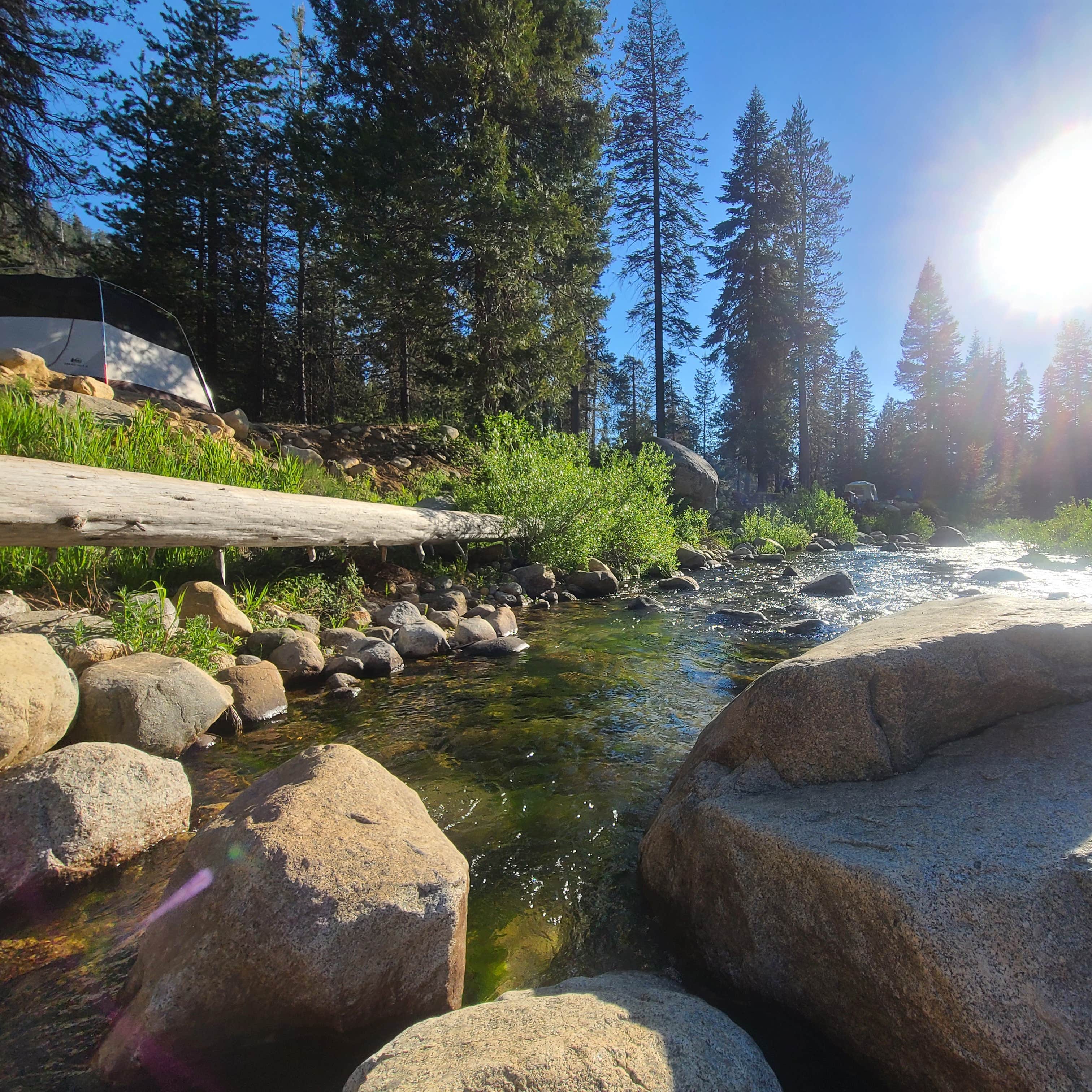
Lodgepole Campground — Sequoia National Park
Lodgepole Campground is Sequoia's flagship campground, with 214 sites at 6,700 feet adjacent to the Marble Fork of the Kaweah River. Open spring through fall, it accepts tents, RVs up to 42 feet, and trailers (no hookups). Lodgepole Village (market, showers, laundry) is a short walk away. Sites have standard amenities: picnic table, fire ring, and bear locker, with flush toilets and drinking water available. The campground's central location near Giant Forest makes it extremely popular - reservations are essential. Between the river, towering firs, and proximity to the General Sherman Tree (2 miles away), Lodgepole offers the quintessential Sequoia camping experience with cool nights and starry skies.
Sequoia National Park - Mineral King High Country Campgrounds
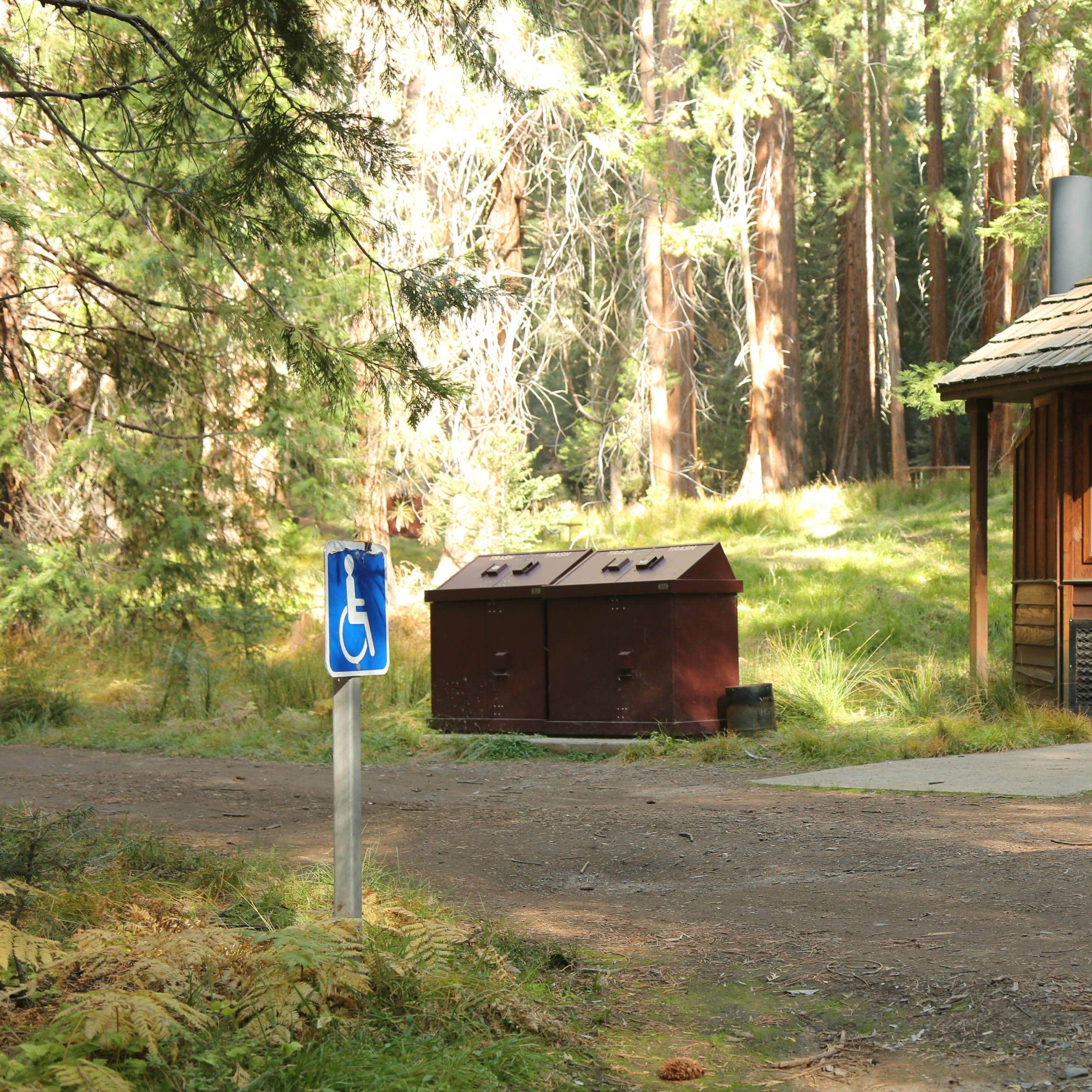
Atwell Mill Campground — Sequoia National Park
Atwell Mill Campground (21 sites) sits in the remote Mineral King valley of Sequoia at 7,800 feet elevation. Accessible via a narrow 25-mile road (not advised for RVs or trailers), Atwell Mill is open late May through mid-October. The campground is named for a historic sawmill; sites nestle among red firs and sequoias near the East Fork Kaweah River. Amenities are rustic: pit toilets, picnic tables, fire rings, and bear boxes; no potable water (creek water must be filtered). Tents and small campers can be accommodated. Atwell Mill is by reservation only and offers a more secluded, wilderness-proximate camping experience - trailheads to alpine lakes and peaks are nearby, and nights are cold even in summer.
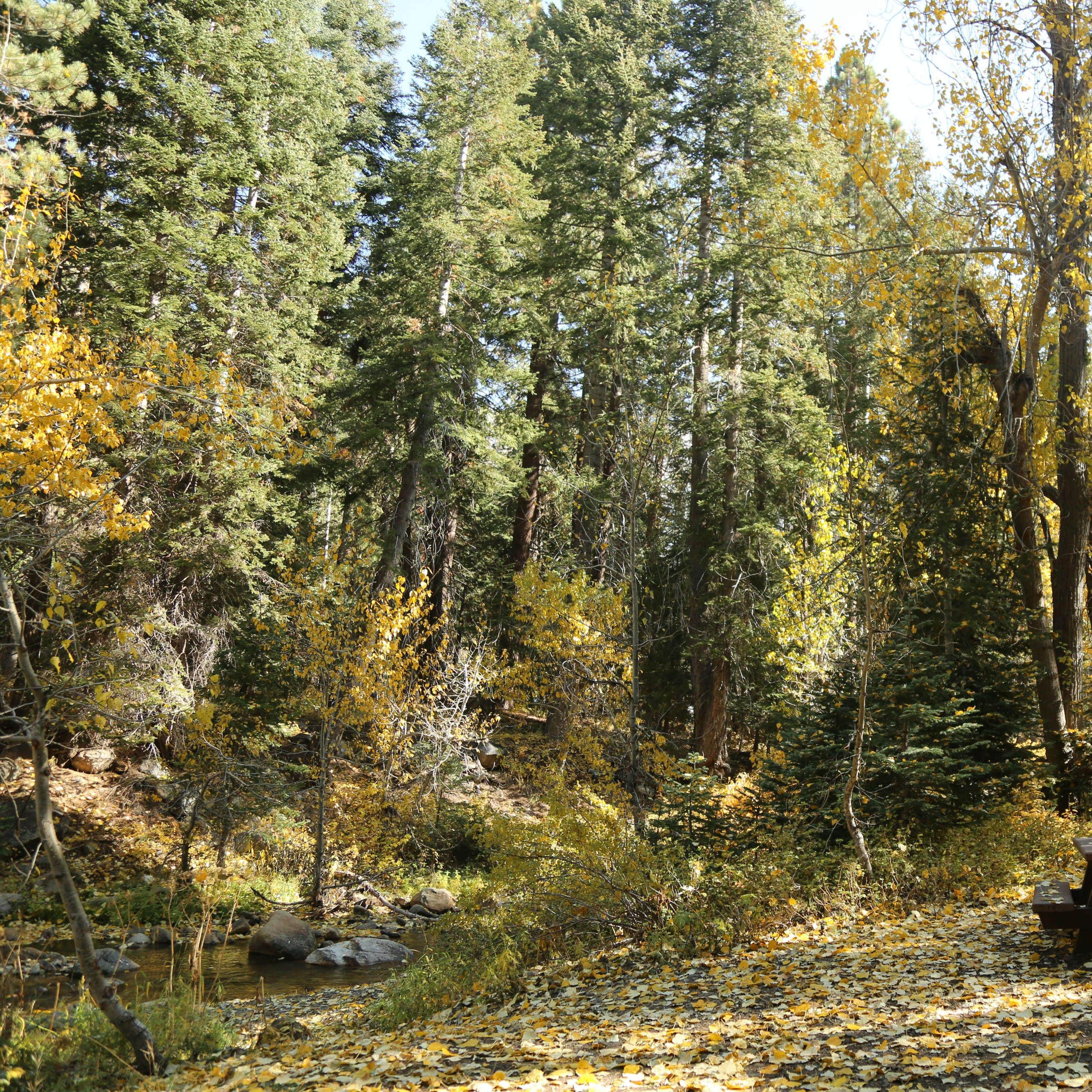
Cold Springs Campground — Sequoia National Park
Cold Springs Campground (40 sites) is the highest frontcountry campground in Sequoia, at 7,500 feet in the Mineral King area. Open roughly late May to mid-October, Cold Springs provides first-come, first-served tent camping in a lovely subalpine meadow setting along the East Fork Kaweah River. Sites have picnic tables, fire rings, and bear boxes, but amenities are basic: pit toilets and no potable water (filter from creek). This campground's elevation makes for cool summer nights and stunning wildflower displays in July. The Mineral King Road is narrow and winding (25 miles from Highway 198), making large RVs impractical. Cold Springs serves as a base for high-country day hikes to Monarch Lakes, Eagle Lake, and the Great Western Divide.
Kings Canyon National Park - Grant Grove Area Campgrounds
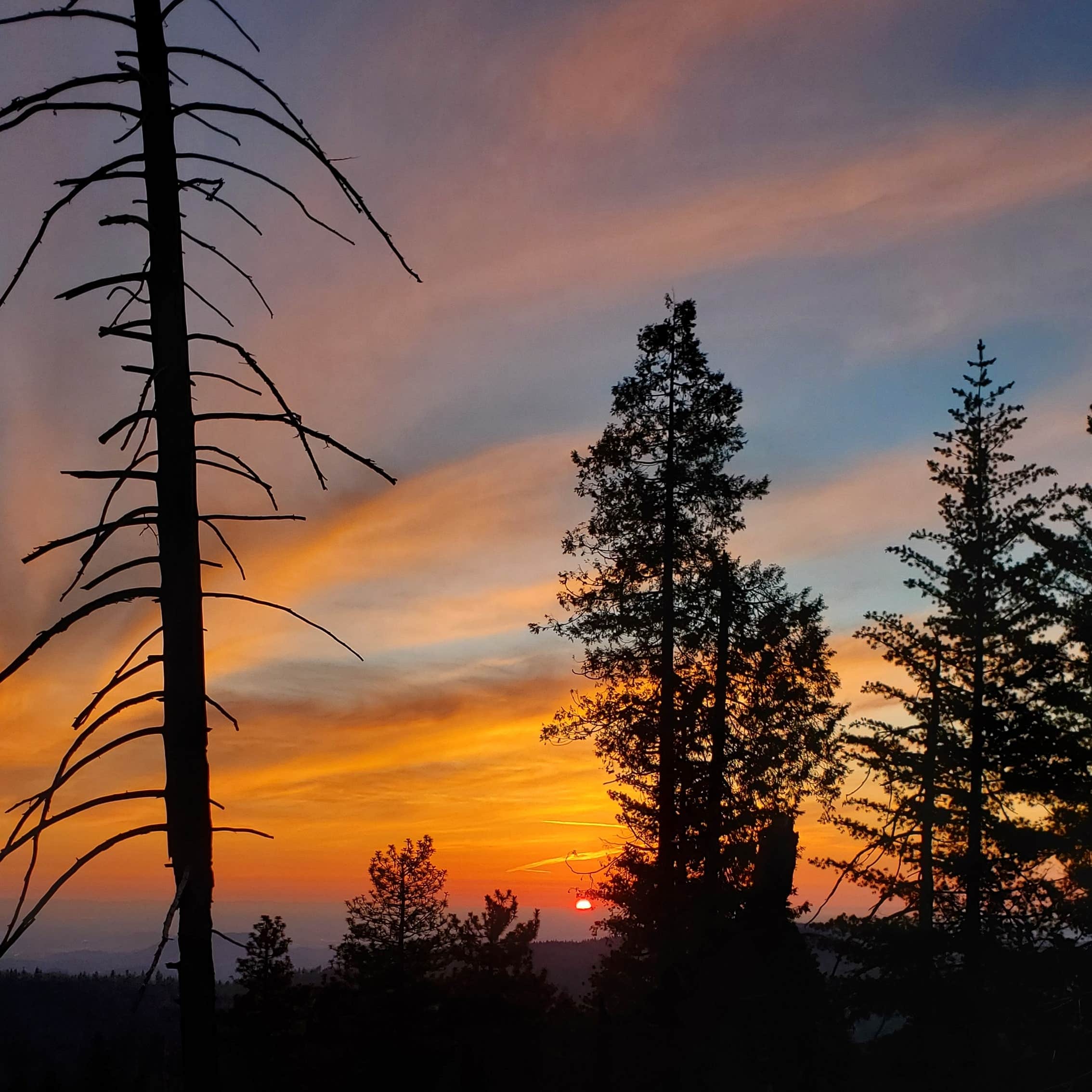
Azalea Campground — Kings Canyon National Park
Azalea Campground features 110 sites at 6,500 feet in the Grant Grove area of Kings Canyon, operating year-round. The campground sits among towering sequoias and pines, providing convenient access to the General Grant Tree and other giant sequoia groves within walking distance. Sites accommodate tents and RVs up to 30 feet (no hookups) with standard amenities: picnic tables, fire rings, food storage lockers, flush toilets, and drinking water. During summer, all sites are by reservation, while fall and winter periods switch to first-come, first-served. Grant Grove Village (a quarter-mile away) offers a visitor center, market, restaurant, and gift shop. Winter camping at Azalea provides a peaceful, snowy sequoia experience with fewer crowds.
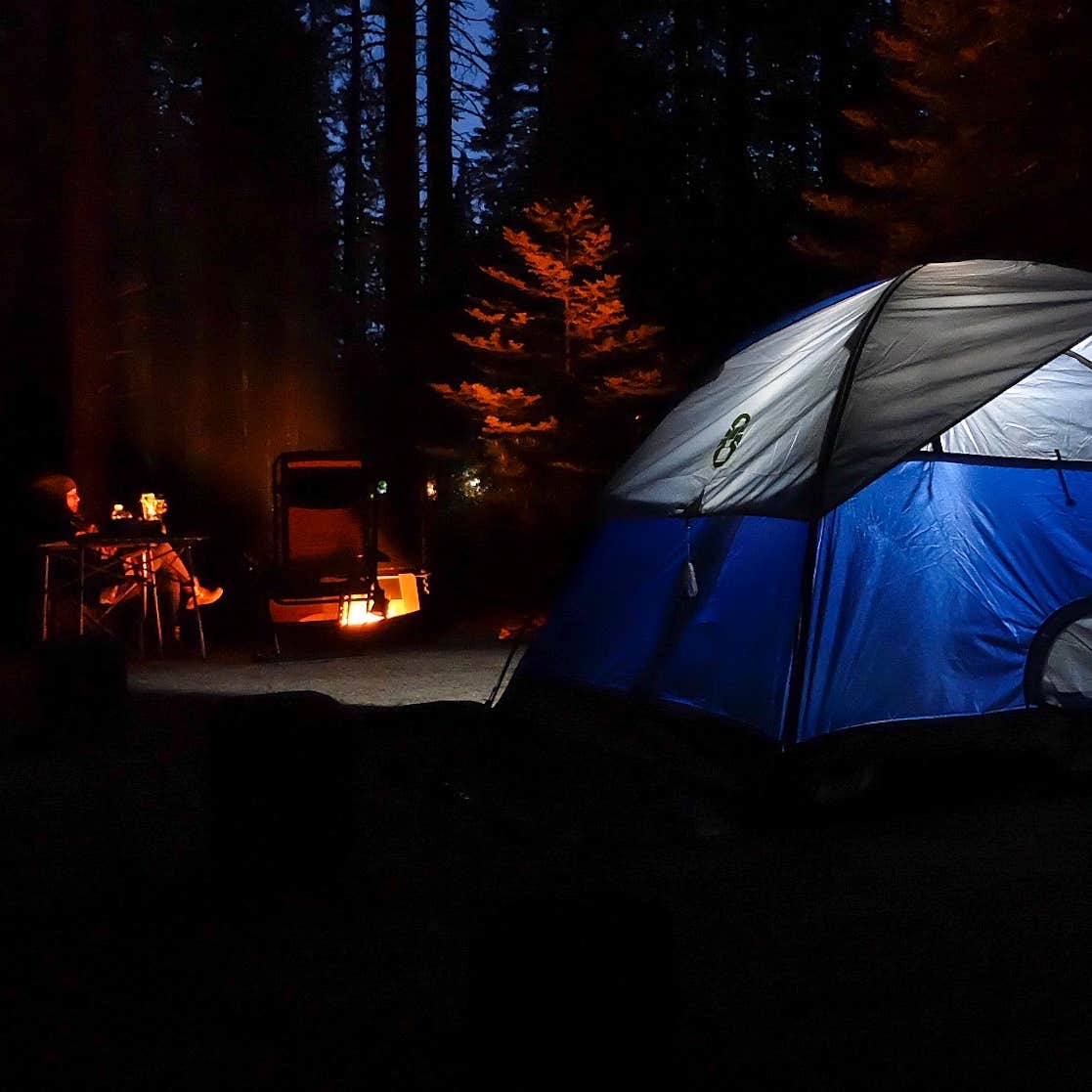
Princess
Princess Campground offers 90 sites along Highway 180 between Grant Grove and Cedar Grove at 5,900 feet elevation. Open from late May through September, this mid-elevation campground sits among mixed conifers with sites suitable for tents and RVs up to 30 feet (no hookups). Amenities include picnic tables, fire rings, bear lockers, flush toilets, and drinking water. Princess provides a quieter alternative to busier Grant Grove campgrounds while offering convenient access to both Grant Grove and Cedar Grove areas. The campground is reservation-only during its operating season. Its location makes it a strategic base for exploring both ends of Kings Canyon's attractions.
Kings Canyon National Park - Cedar Grove Area Campgrounds
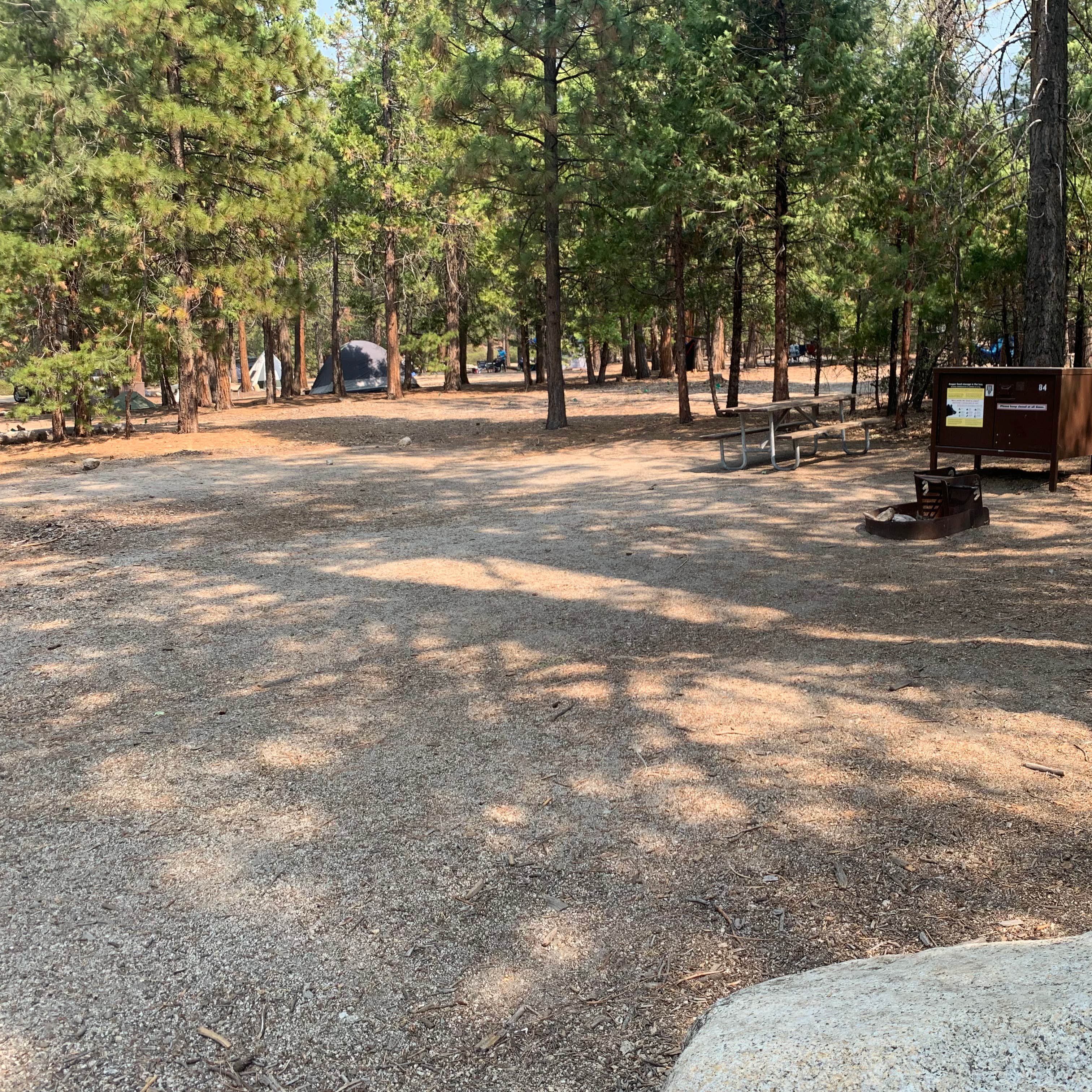
Moraine Campground — Kings Canyon National Park
Moraine Campground sits at 4,600 feet in Cedar Grove, the deepest part of Kings Canyon, with 121 sites open from late May through September. Located along the South Fork Kings River beneath towering granite walls, Moraine offers a dramatic canyon setting. Sites accommodate tents and RVs up to 30 feet (no hookups) with standard amenities: picnic tables, fire rings, bear lockers, flush toilets, and drinking water. Cedar Grove Village (one mile away) provides a small market, snack bar, and visitor center. The campground serves as an excellent base for hiking to Mist Falls, Zumwalt Meadow, and other Cedar Grove trails. Reservations are required. The drive into Cedar Grove involves 30 miles of winding mountain road from Grant Grove - not recommended for long RVs or trailers.
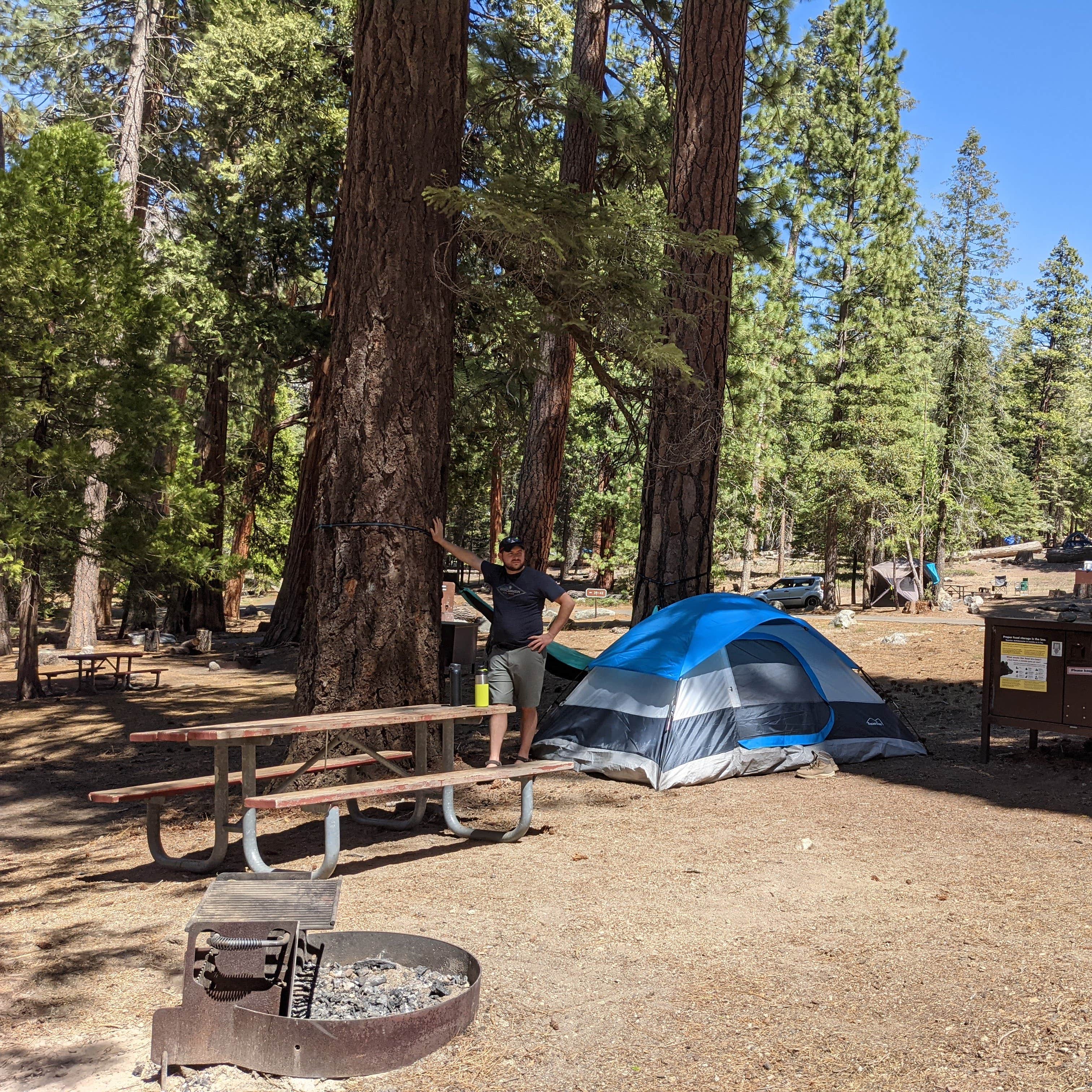
Sheep Creek Campground — Kings Canyon National Park
Sheep Creek Campground contains 111 sites in Cedar Grove at 4,600 feet elevation, operating from late May through September. This riverside campground along the South Fork Kings River offers similar amenities to nearby Moraine: sites for tents and RVs up to 30 feet (no hookups), picnic tables, fire rings, bear lockers, flush toilets, and drinking water. The campground's position in the heart of Cedar Grove provides immediate access to spectacular canyon hiking. Cedar Grove Village amenities sit within a mile. Reservations are required during the operating season. The surrounding granite cliffs create dramatic scenery, particularly during sunrise and sunset. Like other Cedar Grove campgrounds, access involves a winding 30-mile drive from Grant Grove.
Campground Comparison Table
| Campground | Location & Sites | Cost & Reservations |
|---|---|---|
| Potwisha | Sequoia Foothills 42 sites | $22 Recreation.gov |
| Buckeye Flat | Sequoia Foothills 28 sites | $22 Closed 2025 |
| South Fork | Sequoia Foothills 10 sites | Free First-come, first-served |
| Lodgepole | Giant Forest Area 214 sites | $30 Recreation.gov |
| Dorst Creek | Giant Forest Area 281 sites | $30 Closed 2025 |
| Atwell Mill | Mineral King 21 sites | $20 Recreation.gov |
| Cold Springs | Mineral King 40 sites | $20 First-come, first-served |
| Azalea | Grant Grove 110 sites | $26 Recreation.gov (summer) |
| Sunset | Grant Grove 157 sites | $26 Recreation.gov |
| Princess | Between areas 90 sites | $26 Recreation.gov |
| Moraine | Cedar Grove 121 sites | $26 Recreation.gov |
| Sheep Creek | Cedar Grove 111 sites | $26 Recreation.gov |
| Sentinel | Cedar Grove 82 sites | $26 Recreation.gov |
| Canyon View | Cedar Grove 23 group sites | $60-$70 Recreation.gov |
Campground Amenities and Best Uses
Foothills Campgrounds: Potwisha offers year-round access and riverside camping at the lowest elevation, making it ideal for winter camping and early/late season visits. Buckeye Flat (when open) provides an intimate tent-only experience along the river. South Fork delivers primitive, free camping for adventurous campers seeking solitude.
Giant Forest and Lodgepole Area: Lodgepole Campground provides the most convenient access to Giant Forest and General Sherman Tree with full amenities nearby. Dorst Creek (when open) serves as a slightly quieter overflow option with excellent access to Muir Grove.
Mineral King High Country: Atwell Mill and Cold Springs offer remote wilderness camping with access to alpine lakes and high-country trails. These campgrounds suit adventurous campers willing to navigate narrow mountain roads for spectacular scenery and solitude.
Grant Grove Area: Azalea Campground provides year-round access to giant sequoia groves with convenient village amenities. Sunset Campground offers larger capacity with similar grove access. Princess serves as a strategic midpoint between Grant Grove and Cedar Grove.
Cedar Grove Canyon: Moraine, Sheep Creek, and Sentinel campgrounds provide dramatic canyon camping beneath granite walls with access to spectacular hiking. Canyon View accommodates organized groups wanting to experience the canyon together.
RV and Tent Options: For Sequoia and Kings Canyon RV camping, Lodgepole, Dorst Creek (when open), and Grant Grove area campgrounds accommodate rigs up to 30-42 feet. Tent camping in Sequoia and Kings Canyon is available at all campgrounds, with Buckeye Flat (when open), Atwell Mill, and Cold Springs offering tent-only or tent-preferred experiences. For those seeking Sequoia and Kings Canyon dispersed camping, nearby Sequoia National Forest dispersed sites and Big Meadow Group Campground provide additional options.
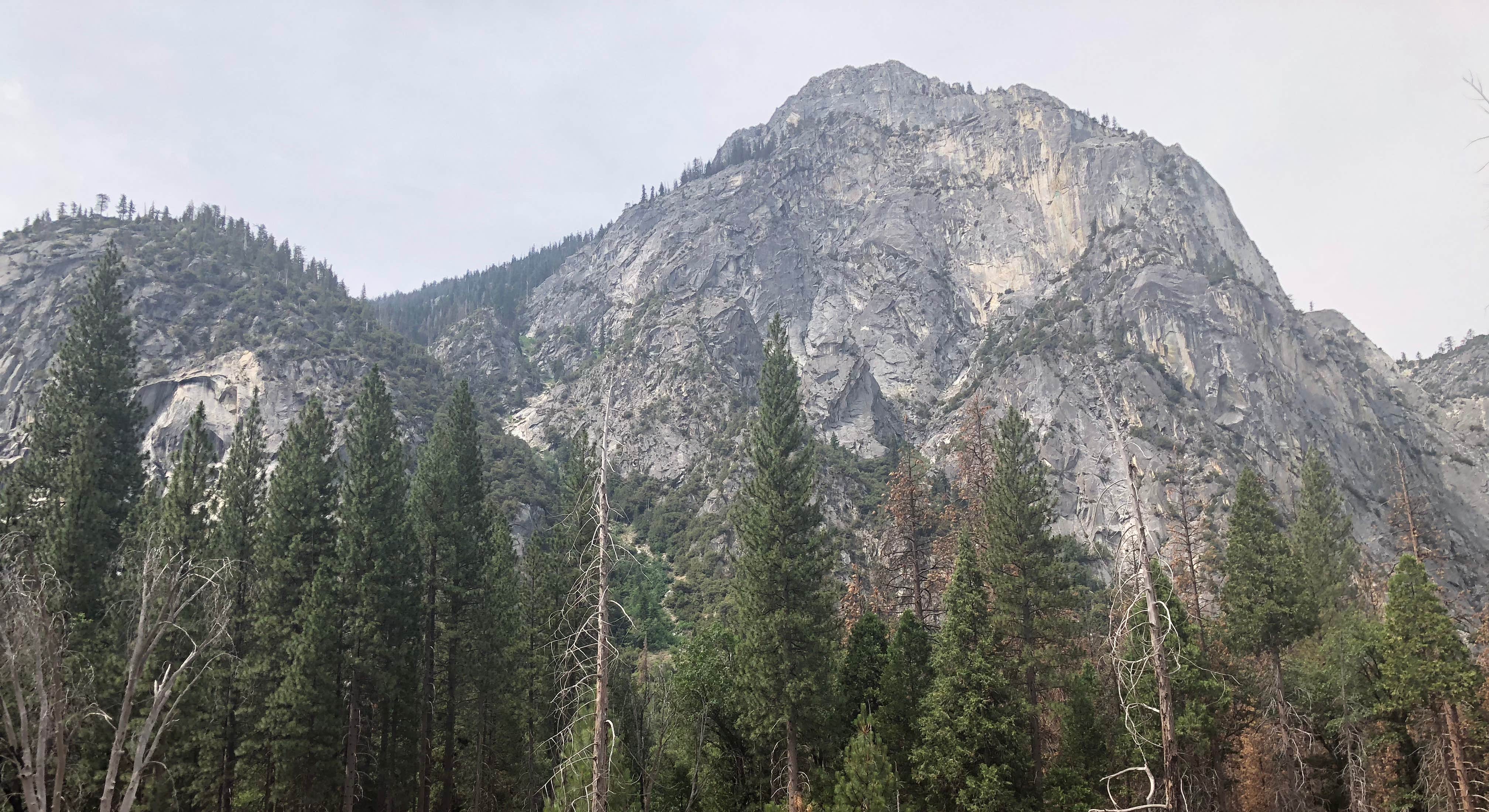 Photo by Bryan R
Photo by Bryan R
Planning Your Sequoia and Kings Canyon Camping Trip 
When to Visit Sequoia and Kings Canyon NPs
| Season | Temperatures | Camping Conditions |
|---|---|---|
| Spring (April-May) | Foothills: 70-80°F days, 45-55°F nights Mid-elevation: 60-70°F days, 35-45°F nights High country: Snow-covered | Foothills campgrounds fully open Lodgepole and Grant Grove open by late May High-country roads closed |
| Summer (June-August) | Foothills: 90-100°F days, 60-70°F nights Mid-elevation: 75-85°F days, 45-55°F nights High country: 70-80°F days, 35-45°F nights | All campgrounds open Highest demand period Reservations essential |
| Fall (September-October) | Foothills: 80-90°F days, 50-60°F nights Mid-elevation: 65-75°F days, 40-50°F nights High country: 55-65°F days, 25-35°F nights | Most campgrounds open through September High-country sites close after first snow Moderate crowds |
| Winter (November-March) | Foothills: 55-65°F days, 35-45°F nights Mid-elevation: 40-50°F days, 20-30°F nights High country: Inaccessible | Only Potwisha and Azalea open Mineral King Road closed Chains often required |
Spring (April-May):
Spring brings wildflower displays to foothills campgrounds while higher elevations remain snow-covered. Potwisha and other foothills sites operate at full capacity by April. Waterfalls flow strongest during April and May from snowmelt, creating spectacular displays along the Generals Highway. Mid-elevation campgrounds like Lodgepole and Grant Grove typically open by late May, weather permitting. Daytime temperatures range from pleasant to warm in foothills (70-80°F) while mid-elevation sites remain cool. Nights can still drop below freezing at higher elevations. The Mineral King Road typically opens by Memorial Day weekend, conditions permitting. Crowds remain moderate until Memorial Day weekend, making late April and early May excellent for avoiding peak-season congestion.
Summer (June-August):
Summer sees all campgrounds operating at full capacity with extremely high demand. Reservations fill within minutes of becoming available for popular campgrounds like Lodgepole and Grant Grove. Foothills campgrounds experience intense heat (90-100°F days), making them less comfortable than higher-elevation options. Mid-elevation campgrounds like Lodgepole, Grant Grove, and Cedar Grove provide ideal temperatures (75-85°F days, 45-55°F nights). High-country Mineral King campgrounds offer the coolest conditions (70-80°F days, 35-45°F nights) with spectacular alpine wildflower displays in July. Afternoon thunderstorms occur frequently in July and August, particularly in high country. All facilities, visitor centers, and services operate at peak capacity. Wildlife viewing is excellent, particularly at dawn and dusk. Consider lesser-known national parks if seeking alternatives to peak-season crowds.
Fall (September-October):
September offers an excellent combination of pleasant weather and decreased crowds, particularly after Labor Day. Most campgrounds remain open through September with nearly full services. Foothills sites remain warm (80-90°F days) while mid-elevation campgrounds provide comfortable temperatures (65-75°F days). Aspens and dogwoods create fall color displays, particularly in mid-October. High-country campgrounds typically close after the first significant snowfall, usually by mid-October. Mineral King Road often closes for the season by late October or early November. Nights grow increasingly cold, often dropping below freezing at higher elevations by October. Grant Grove and Lodgepole may switch to first-come, first-served basis by late October before seasonal closures.
Winter (November-March):
Winter camping is limited but offers unique experiences among snow-covered sequoia groves. Only Potwisha (foothills) and Azalea (Grant Grove) remain open year-round. Both switch to first-come, first-served during winter months. Foothills camping at Potwisha provides milder conditions (55-65°F days, 35-45°F nights) suitable for those seeking winter camping without extreme cold. Azalea Campground offers peaceful winter camping among snow-dusted sequoias with temperatures ranging from 40-50°F days to 20-30°F nights. Tire chains are often required on the Generals Highway during and after storms. The Mineral King Road closes completely for winter, typically from November through late May. Services are limited; Grant Grove Market and Lodgepole Market maintain reduced winter hours. Cross-country skiing and snowshoeing become popular activities in Grant Grove and Giant Forest areas.
Sequoia and Kings Canyon Reservation Systems Explained
Securing a campsite in Sequoia and Kings Canyon requires understanding the reservation process:
Recreation.gov Reservations operate on a one-month rolling window system. Reservations open on the 15th of each month at 7:00 AM Pacific Time for sites one month ahead. For example, June reservations open on May 15th. This system differs from many other national parks that use longer advance windows. Most developed campgrounds (Lodgepole, Azalea, Sunset, Princess, Moraine, Sheep Creek, Sentinel, Canyon View, Atwell Mill) require reservations during their operating seasons.
First-Come, First-Served Options include Cold Springs in Mineral King (summer only) and South Fork (year-round). During winter months (typically November through March), Potwisha and Azalea switch from reservations to first-come, first-served. For summer first-come, first-served camping, arrive early in the morning (before 10 AM) and try midweek rather than weekends.
Booking Strategy Tips:
- Create your Recreation.gov account beforehand and log in before the booking window opens
- Be ready at exactly 7:00 AM Pacific Time on the 15th of the month
- Have alternate dates and campgrounds ready if your first choice isn't available
- Consider less popular campgrounds (Princess, Cedar Grove sites) which fill more slowly
- Check for cancellations regularly, especially 3-7 days before desired dates when payment deadlines pass
- Weekdays typically have better availability than weekends
- Consider shoulder seasons (late May, September) for better availability
Alternative Camping Options: When in-park sites are full, consider Sequoia National Forest campgrounds surrounding the parks, including Upper Stony Creek Campground and dispersed sites in the Giant Sequoia National Monument. Additional options include Sequoia and Kings Canyon cabin rentals like Grant Grove Cabins and unique experiences at Pear Lake Winter Hut. For those seeking luxury experiences, explore Sequoia and Kings Canyon glamping options.
Campground Costs and Budgeting
| Campground Type | Nightly Cost | Key Features |
|---|---|---|
| Foothills Campgrounds | $20-$22 | Potwisha, Buckeye Flat (when open) - flush toilets, drinking water |
| Mid-Elevation Campgrounds | $26-$30 | Lodgepole, Grant Grove area, Cedar Grove - flush toilets, nearby amenities |
| High-Country Campgrounds | $20 | Mineral King sites - vault toilets, no potable water, remote access |
| Group Sites | $60-$70 | Canyon View - accommodates 7-15 people per site |
| Primitive Sites | Free | South Fork - no services, fire permit required |
Additional Fees and Budget Tips
Park and Entry Fees: Park entrance fee costs $35 per vehicle (valid for 7 days) or $70 for an annual Sequoia and Kings Canyon pass. The America the Beautiful Pass at $80 annually covers all national parks.
Facility and Service Fees: Showers cost $5-$8 per shower at Lodgepole Village and Cedar Grove Village. Firewood costs $8-$12 per bundle at campground stores and village markets. Ice costs $4-$6 per bag at village markets. Laundry facilities at Lodgepole Village cost $3-$4 per load.
Budget-Friendly Alternatives: Visit during shoulder seasons (May, September-October) for better weather and rates. Consider Sequoia National Forest camping with pets allowed for free or low-cost dispersed camping. Stay at first-come, first-served campgrounds to avoid reservation fees. Purchase an America the Beautiful Pass if visiting multiple parks.
Essential Gear for Sequoia and Kings Canyon Camping
Pack prepared for significant temperature swings and bear country requirements:
Sleeping Gear:
- Sleeping bag rated for at least 20-25°F (temperatures drop dramatically at night)
- Insulated sleeping pad with R-value of 4 or higher
- Extra blankets or sleeping bag liner for unexpected cold
- Tent with rainfly and footprint (afternoon thunderstorms common in summer)
Kitchen Setup:
- Camp stove and sufficient fuel (firewood restrictions common during fire season)
- Large water containers (some campgrounds have limited water access)
- Cooler with block ice or ice packs (lasts longer than cubed ice)
- All food storage must fit in provided bear lockers
- Dish washing supplies and basin
Clothing:
- Layering system for 40-50°F temperature swings
- Moisture-wicking base layers
- Insulating mid-layers (fleece or synthetic)
- Waterproof rain jacket and pants
- Warm hat and gloves (even for summer high-country camping)
- Sturdy hiking boots with ankle support
Bear Safety:
- Bear spray (recommended for hiking)
- Nothing scented may remain outside bear lockers
- Headlamp for nighttime walks to restroom
- Knowledge of proper food storage protocols
Other Essentials:
- First aid kit with blister treatment
- Sunscreen and lip balm (high elevation intensifies UV exposure)
- Insect repellent (mosquitoes present near water)
- Offline maps and GPS device (cell service extremely limited)
- Tire chains if visiting spring or fall (often required during storms)
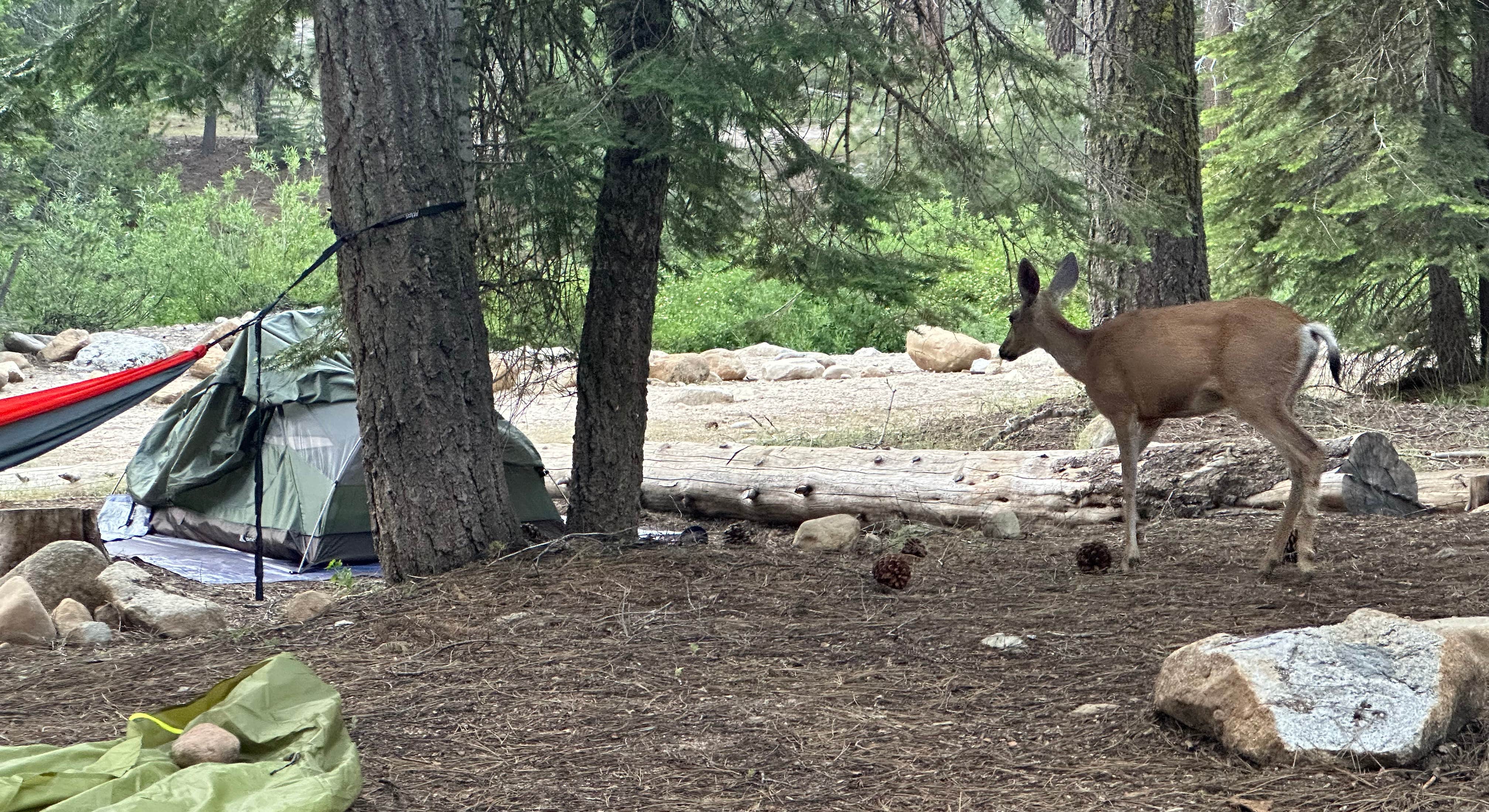 Photo by Rachel V
Photo by Rachel V
Wildlife Safety and Park Regulations 
Black Bear Safety in Sequoia and Kings Canyon
Sequoia and Kings Canyon host significant black bear populations that regularly visit campgrounds. Proper food storage is mandatory, not optional:
Food Storage Requirements:
All food, toiletries, and scented items must be stored in bear-proof lockers when not actively in use. This includes: all food items, coolers (even empty ones), toiletries, sunscreen, insect repellent, trash, pet food, cooking equipment, and any item with a scent. Bear lockers are provided at each campsite and measure approximately 48" x 24" x 18". Everything scented must fit inside; if it doesn't fit, you have too much gear for car camping here.
Nothing may remain in vehicles. Bears have learned to recognize coolers, grocery bags, and even empty food containers as potential food sources. They can and will break into vehicles to access food or scented items. Even a crumb or empty wrapper can trigger a break-in.
Cooking areas must remain clean. Clean all cooking equipment, tables, and grills immediately after use. Dispose of trash in bear-proof dumpsters promptly. Do not wash dishes at your campsite; use designated dishwashing stations.
Bear Encounter Guidelines:
- If you see a bear, make loud noise to scare it away (yell, clap, bang pots)
- Maintain distance of at least 50 yards from all bears
- Never approach or feed bears under any circumstances
- If a bear approaches your campsite, continue making noise until it leaves
- Report all bear sightings to campground hosts or rangers
- Black bears are typically not aggressive toward humans but are motivated by food
Consequences of Improper Storage:
Rangers actively patrol campgrounds checking for proper food storage. Violations result in:
- First offense: Warning and mandatory attendance at bear safety talk
- Second offense: Citation with fine starting at $275
- Serious violations: Immediate eviction from campground
- Bears that obtain human food must often be euthanized
Park Regulations and Etiquette
| Regulation Category | Specific Rules | Penalties |
|---|---|---|
| Campfires | Permitted only in established fire rings Must be attended at all times Completely extinguish before leaving Subject to seasonal fire restrictions | Fines starting at $275 Possible eviction from campground |
| Food Storage | All food/scented items in bear lockers Nothing in vehicles or tents Clean tables and grills immediately after use | Warnings, fines starting at $275 Possible eviction from campground |
| Quiet Hours | 10:00 PM to 6:00 AM strictly enforced Generator hours: 6-8 AM, 12-2 PM, 6-8 PM only | Warnings, then possible eviction |
| Wildlife | Feeding prohibited 50 yards from bears 25 yards from other wildlife | Significant fines and citations |
Additional Park Regulations
Camping Limits: Maximum 6 people per site, maximum 2 vehicles per site, 14-night limit June-September, 30-night annual limit.
Campfire Restrictions: Fire restrictions typically take effect during summer months, especially during drought conditions. When restrictions are in place, no wood fires are permitted - only propane stoves. Check current fire restrictions at visitor centers upon arrival. Firewood gathering is prohibited throughout the parks; purchase firewood at village markets.
Protected Resources: No collecting plants, rocks, wood, pinecones, or any natural objects. No carving or driving nails into trees. Stay on established trails to protect fragile meadow and forest ecosystems. No trenching around tents or altering campsites in any way.
Other Important Rules: Check-in time is 12:00 PM, check-out time is 12:00 PM. Pets must be leashed at all times and cannot be left unattended. Pets are prohibited on all trails except paved paths in developed areas. Drones/UAVs are prohibited throughout the parks. Bicycles are permitted only on paved roads and designated paved paths.
Beyond the Campground: Activities and Exploration 
Day Trips from Sequoia and Kings Canyon Campgrounds
From Lodgepole/Giant Forest Area:
General Sherman Tree and Congress Trail: The largest tree on Earth by volume sits just 2 miles from Lodgepole Campground via the free shuttle. The paved 2-mile Congress Trail loop connects several massive sequoias in the Giant Forest. Arrive before 9 AM or after 4 PM to avoid peak crowds at the General Sherman Tree.
Moro Rock: This granite dome rises 6,725 feet with 360-degree views reached via 400 stone steps. The quarter-mile climb gains 300 feet vertically, offering spectacular views of the Great Western Divide. The parking area sits 3 miles from Lodgepole via the free shuttle during summer. Dawn and dusk provide the best lighting for photography.
Crescent Meadow and Log Meadow: These lush Sierra meadows sit at the end of a paved road 3 miles beyond Giant Forest. Tharp's Log, a pioneer homestead inside a fallen sequoia, sits beside Crescent Meadow. The 1.8-mile Crescent Meadow Loop provides easy walking with wildflowers in July. Bobcat Meadow Trail extends the hike into quieter territory.
From Grant Grove Area:
General Grant Tree Trail: This paved half-mile loop showcases the General Grant Tree (the nation's Christmas tree and second-largest tree by volume) along with numerous other massive sequoias. The trail starts at Grant Grove Village and includes interpretive signs explaining sequoia ecology.
Panoramic Point: A short 2.3-mile drive from Grant Grove Village leads to a parking area where a quarter-mile trail climbs to spectacular viewpoints. On clear days, the vista extends across the San Joaquin Valley to the Coast Range. This viewpoint is particularly stunning at sunset. The road to Panoramic Point closes in winter but becomes a popular cross-country ski route.
Big Stump Basin: This area preserves stumps of giant sequoias logged in the 1880s, providing sobering perspective on conservation efforts that led to national park designation. The easy 1-mile loop trail includes massive stumps and a tree tunnel. Located just inside the park boundary near the Big Stump entrance.
From Cedar Grove Area:
Zumwalt Meadow: This 1.5-mile loop trail winds through one of Kings Canyon's most beautiful meadows with the South Fork Kings River creating dramatic reflections of surrounding granite cliffs. The trail sits 4.5 miles past Cedar Grove Village on the canyon road. Morning light provides the best photography conditions. Boardwalk sections protect the fragile meadow ecosystem.
Roads End: The literal end of the road in Cedar Grove sits 6 miles past the village, providing access to several wilderness trailheads. Short walks to Muir Rock (a flat granite boulder beside the river, popular for picnicking) and Roaring River Falls (5-minute walk to impressive cascade) require minimal effort. This area serves as the gateway to backcountry destinations like Rae Lakes Loop.
Boyden Cavern: Located just outside the park boundary on Highway 180, this commercial cave offers 50-minute guided tours through marble cavern formations. The cavern provides a cool retreat on hot summer days. Tours operate late May through September; tickets must be purchased at the entrance (no advance reservations).
From Mineral King:
Eagle Lake and Mosquito Lakes: These high-country destinations require significant hiking effort (6.8 miles round-trip to Eagle Lake, 7.2 miles to Mosquito Lakes) but reward hikers with pristine alpine lakes beneath granite peaks. Both trails climb steeply from Mineral King Valley, gaining 2,200+ feet of elevation. July and August provide the best wildflower displays. Pack layers as weather changes rapidly at this elevation.
Monarch Lakes: This 8.4-mile round-trip hike climbs 2,500 feet to reach spectacular alpine lakes at 10,400 feet elevation. The trail passes through meadows and granite basins with dramatic views of Sawtooth Peak. This ranks among the most popular day hikes in Mineral King, so start early (by 7 AM) for parking.
Top Hiking Trails Near Campgrounds
| Trail Name | Difficulty & Distance | Key Features |
|---|---|---|
| Tokopah Falls | Moderate 3.7 miles round-trip | Riverside trail to 1,200-foot waterfall, best May-July, starts near Lodgepole |
| Lakes Trail to Pear Lake | Strenuous 12.6 miles round-trip | Alpine lakes chain including Heather, Aster, Emerald, and Pear Lakes, stunning high country |
| Mist Falls | Moderate 8 miles round-trip | Most popular Cedar Grove hike, impressive cascade, relatively gentle climb along river |
| Big Trees Trail | Easy 1.3 miles loop | Wheelchair-accessible paved loop through sequoia grove, starts at Giant Forest Museum |
| Don Cecil Trail to Lookout Peak | Strenuous 13 miles round-trip | Challenging climb from Cedar Grove to historic fire lookout with panoramic views |
| Little Baldy | Moderate 3.4 miles round-trip | Granite dome with 360-degree views, starts along Generals Highway near Dorst Creek area |
| Monarch Lakes | Strenuous 8.4 miles round-trip | Mineral King high-country lakes at 10,400 feet, wildflowers in July, dramatic granite peaks |
| North Grove Loop | Easy 1.5 miles loop | Quieter sequoia grove near Grant Grove, paved trail through old-growth forest |
Trail Access and Starting Points
Lodgepole/Giant Forest Area Trails: Most trailheads are accessible via the free Giant Forest shuttle during summer months. Tokopah Falls trailhead sits at Lodgepole Campground's north end. The Lakes Trail starts at Wolverton (3 miles from Lodgepole). Little Baldy Trail begins along the Generals Highway. Big Trees Trail starts at the Giant Forest Museum.
Cedar Grove Trails: Mist Falls begins at the Roads End parking area (6 miles past Cedar Grove Village). Zumwalt Meadow trailhead sits 4.5 miles past the village. Don Cecil Trail starts near Cedar Grove Village. Parking fills quickly at popular trailheads; arrive before 8 AM during summer.
Grant Grove Trails: General Grant Tree Trail begins at Grant Grove Village parking area. North Grove Loop starts at the North Grove parking area off Highway 180. Panoramic Point Road leads to the Panoramic Point Trail.
Mineral King Trails: All major Mineral King trails begin from the valley floor. Eagle Lake and Monarch Lakes trailheads share parking areas. Arrive before 7 AM in summer for parking as the lot fills early.
Water Activities in Sequoia and Kings Canyon
Despite being known for mountains rather than lakes, these parks offer several water-based activities:
Swimming Holes:
Middle Fork Kaweah River at Potwisha Campground provides summer swimming and wading with several pools and gentle rapids. Water levels are highest May-July from snowmelt, dropping significantly by August-September.
South Fork Kings River in Cedar Grove offers numerous swimming holes accessible from short trails off the main canyon road. Muir Rock provides a popular flat granite area beside deep pools. Water temperatures remain cold (50-60°F) even in summer.
East Fork Kaweah River in Mineral King creates small pools suitable for cooling off after hot hikes, though water temperatures stay quite cold. Access along the river requires short walks from the road.
Fishing Opportunities:
California fishing license required for anglers 16 and older. Both parks follow California fishing regulations with additional park-specific rules:
South Fork Kings River (Cedar Grove) - Wild rainbow and brown trout populations with catch-and-release fishing. Best fishing occurs May-June and September-October. Flies and artificial lures only in many sections.
Kaweah River Forks (Sequoia) - Rainbow and brown trout throughout the drainage. The Middle Fork near Potwisha provides accessible fishing. South Fork requires hiking to reach productive areas.
High-Country Lakes - Many alpine lakes in both parks contain brook, golden, or rainbow trout. Backcountry permits required for overnight fishing trips. Some lakes are naturally fishless to protect rare amphibian species.
Water Safety Guidelines:
- Water temperatures rarely exceed 60°F even during peak summer
- Currents can be stronger than they appear, especially May-July during snowmelt
- No lifeguards monitor any swimming areas - swim at your own risk
- Never swim or wade above waterfalls or in rapids
- Supervise children closely near all water features
- Life jackets recommended for children and weak swimmers
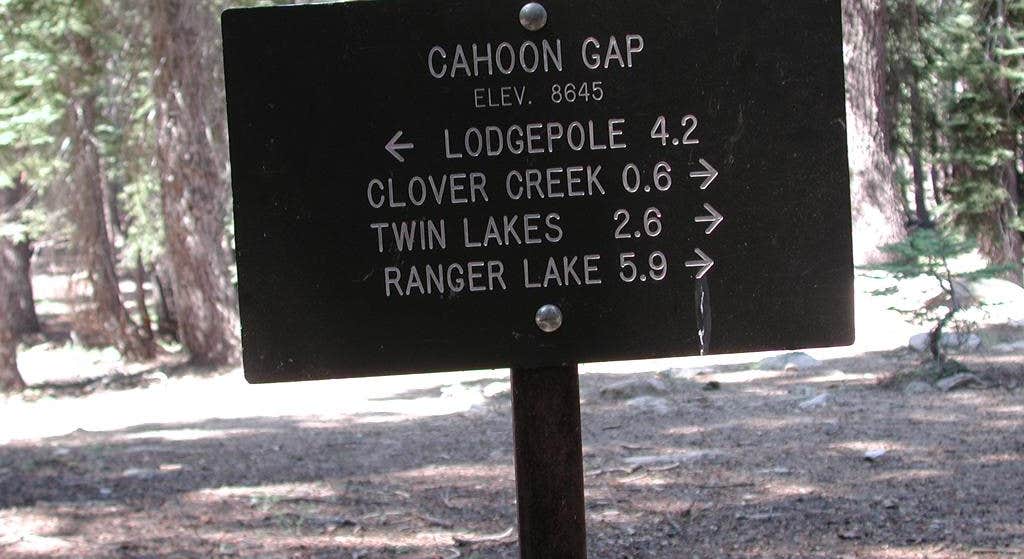 Photo by Roberto R
Photo by Roberto R
The Dyrt Community Insights 
Ranger Recommendations for Sequoia and Kings Canyon
The Dyrt Rangers offer these insider tips from experienced campers who extensively explore these parks:
Best Sites at Popular Campgrounds:
"At Lodgepole, sites along the river (particularly sites 1-20) provide the best combination of shade and river sounds," notes one Dyrt Ranger with over 15 Sequoia trips. "Sites near Loop E offer slightly more privacy with forest buffers between neighbors." For Grant Grove, Rangers consistently recommend Azalea Campground over Sunset: "Azalea's sites feel more spacious and forested, while Sunset can feel more parking-lot-like despite being newer."
Cedar Grove Hidden Gem:
"Most people rush to Zumwalt Meadow and Mist Falls, but the Roaring River Falls walk at Roads End takes five minutes and feels completely different than the rest of Cedar Grove," advises a longtime Kings Canyon visitor. Several Rangers mention that Cedar Grove campgrounds offer nearly identical amenities and access, so booking any Cedar Grove site guarantees excellent canyon camping.
Timing and Crowd Management:
Rangers emphasize that timing matters more than campground choice for avoiding crowds. "Visit Sequoia on weekdays in June or September - you'll have giants practically to yourself while July weekends feel like Disneyland," suggests one Ranger. Multiple reviewers recommend exploring Giant Forest before 9 AM or after 5 PM when day visitors have left.
Temperature Preparation:
"Pack like you're camping in two different climates," recommends a Mineral King specialist. "I've seen people shiver through 35°F mornings after sweating through 80°F afternoons. The temperature swing is real - bring warm sleeping bags even for August camping at higher elevations."
Top-Rated Campsites from The Dyrt Community
| Category | Top Pick & Rating | Key Highlights |
|---|---|---|
| Highest-Rated In-Park | Lodgepole 4.6/5 stars | Central location, full amenities nearby, river access, proximity to Giant Forest |
| Best for Families | Azalea 4.5/5 stars | Year-round access, spacious sites, short walk to General Grant Tree, village amenities |
| Most Dramatic Setting | Sentinel (Cedar Grove) 4.7/5 stars | Towering granite walls, riverside sites, incredible canyon views, access to best hiking |
| Best Primitive Experience | Cold Springs 4.4/5 stars | High-country setting, alpine meadow, wildlife viewing, access to lake trails |
The Dyrt Community Insights and Recommendations
Lodgepole Praise: The Dyrt community consistently praises Lodgepole's convenience and access to Giant Forest. Reviewers appreciate the nearby village with market, showers, and laundry facilities. Common mentions include the pleasant river sounds and relatively spacious sites considering the campground's size. Some reviewers note that sites near the entrance road experience more noise.
Cedar Grove Love: Cedar Grove campgrounds (Moraine, Sheep Creek, Sentinel) receive outstanding ratings for dramatic scenery. Reviewers frequently describe the morning light on granite walls as "cathedral-like" and praise the campgrounds' proximity to spectacular hiking. The remote feeling despite full amenities earns consistent mention.
Grant Grove Balance: Azalea Campground receives praise for year-round access and convenient sequoia grove proximity. Reviewers appreciate the forested sites and note that winter camping among snow-covered sequoias creates magical experiences. The village's market and dining options earn consistent positive mentions.
Mineral King Adventure: Cold Springs and Atwell Mill receive strong ratings from adventurous campers willing to navigate the winding Mineral King Road. Reviewers emphasize the spectacular high-country setting, abundant wildflowers, and excellent hiking access. Common warnings include inadequate preparation for cold nights and the challenging road drive.
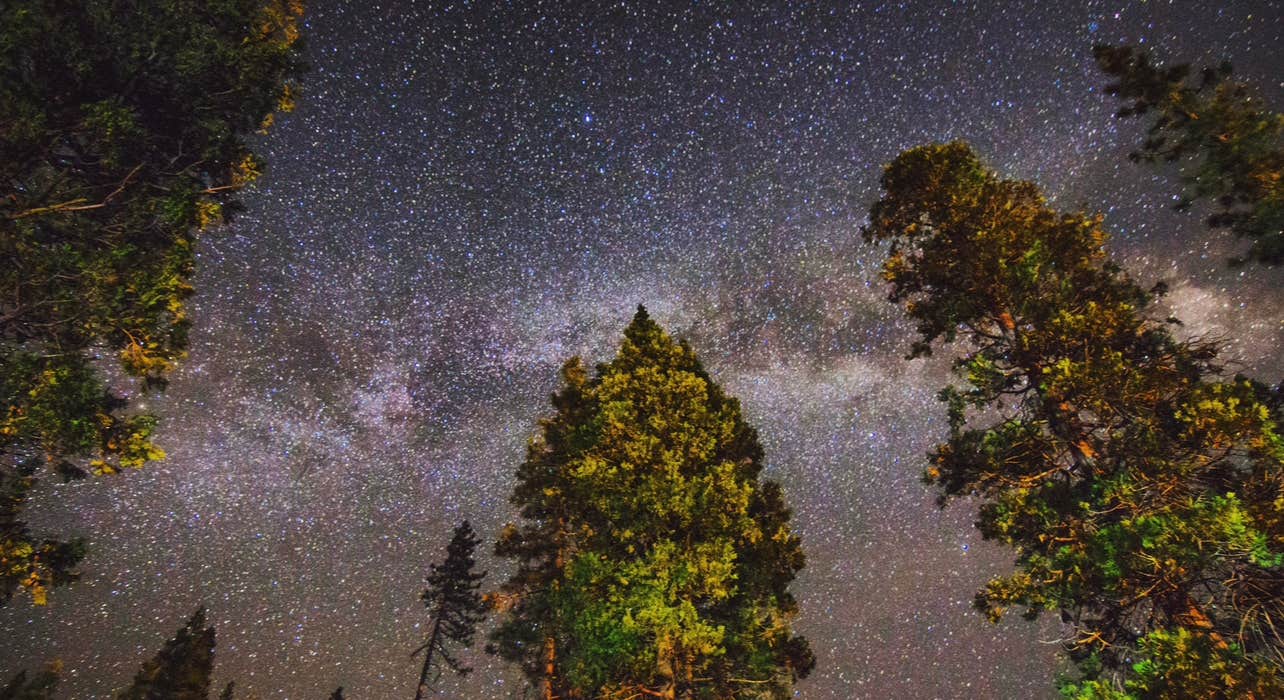 Photo by Heather L
Photo by Heather L
Responsible Camping Practices 
Leave No Trace in Sequoia and Kings Canyon
Camping in these parks requires commitment to protecting fragile Sierra ecosystems:
Bear and Wildlife Protection:
Always store food in bear lockers. This single practice prevents countless wildlife conflicts and saves bears' lives. Bears that obtain human food become problem bears requiring relocation or euthanization. Your compliance directly impacts wildlife survival.
Never feed any wildlife. This includes ground squirrels, jays, chipmunks, and deer. Fed animals lose their natural foraging behaviors and often become aggressive or dependent on humans. Food-conditioned animals face shortened lifespans and increased human conflicts.
Maintain proper wildlife viewing distances. Stay at least 50 yards from bears and mountain lions. Keep 25 yards from deer, coyotes, and other wildlife. Use binoculars or telephoto lenses for closer views. Never surround, corner, or separate wildlife from their young.
Pack It In, Pack It Out:
Remove all trash and belongings. Inspect your campsite thoroughly before leaving. Pick up micro-trash like bottle caps, food wrappers, and cigarette butts. Many campers carry an extra trash bag for picking up litter left by others.
Use bear-proof dumpsters correctly. Bag all trash securely before depositing in dumpsters. If dumpsters are full, carry trash to the next available bin or take it out of the park. Never leave trash bags beside overflowing dumpsters as this creates immediate bear problems.
Dispose of dishwater properly. Use designated utility sinks for dishwashing water. Never pour dishwater on the ground at your campsite or in vault toilets. Food particles attract bears and damage soil ecosystems.
Campfire Responsibility:
Follow all fire restrictions strictly. During dry conditions, campfire bans protect forests from wildfires. Restrictions typically take effect by mid-summer and extend through fall. Check current conditions at visitor centers.
Keep fires small and contained. Use only established fire rings. Never leave fires unattended. Collect all trash and food waste from fire rings before starting fires. Never burn trash, plastic, or food waste.
Purchase local firewood only. Transporting firewood spreads invasive insects and diseases that devastate forests. Purchase firewood from park stores or village markets. Never gather wood from forests or take wood from downed trees.
Completely extinguish fires. Drown fires with water, stir ashes, and drown again until cold to the touch. Dead-out fires prevent wildfires that can destroy sequoia groves.
Protect Sequoia Groves and Meadows:
Stay on established trails. Sequoia roots grow near the surface and are easily damaged by foot traffic. Walking off-trail compacts soil and damages the shallow root systems of these ancient trees.
Don't carve or mark trees. Damaging bark creates entry points for insects and disease. Even ancient sequoias can be harmed by human impact.
Respect meadow restoration areas. Many meadows have boardwalks and designated paths to protect fragile ecosystems. Stay on boardwalks in areas like Crescent Meadow and Zumwalt Meadow.
Leave natural objects where you find them. This includes pinecones, rocks, wildflowers, and wood. Sequoia cones and other natural objects play important roles in forest ecology.
Water Conservation:
Take brief showers. Hot water is limited at Lodgepole and Cedar Grove facilities. Five-minute showers allow everyone access to hot water.
Turn off faucets completely. Report leaking faucets to campground hosts. Water resources are limited, especially during drought years.
Minimize soap use. Use biodegradable soap sparingly when washing dishes. Even biodegradable soaps impact water quality.
Frequently Asked Questions 
When should I make reservations for Sequoia and Kings Canyon campgrounds? Reservations open on a one-month rolling window system through Recreation.gov. On the 15th of each month at 7:00 AM Pacific Time, reservations become available for one month ahead. For example, June reservations open on May 15th. Popular campgrounds like Lodgepole, Azalea, and Cedar Grove sites fill within minutes to hours of opening, especially for summer weekends. Weekday reservations typically offer better availability. Check regularly for cancellations 3-7 days before your desired dates.
Can I camp in Sequoia and Kings Canyon in winter? Yes, winter camping is available at two campgrounds. Potwisha (in Sequoia's foothills) and Azalea (in Kings Canyon's Grant Grove) remain open year-round. Both switch to first-come, first-served during winter months (typically November through March). Winter camping among snow-covered sequoia groves at Azalea creates memorable experiences, though temperatures frequently drop below freezing at night. Tire chains are often required on the Generals Highway during and after winter storms. Most other park roads close for winter, including the entire Mineral King Road and often the road to Cedar Grove.
Which campground is closest to the giant sequoia trees? Lodgepole Campground provides the closest camping to the Giant Forest, home to General Sherman Tree and thousands of giant sequoias. The campground sits 2 miles from the General Sherman Tree via free shuttle, with the entire Giant Forest area easily accessible. In Kings Canyon, Azalea Campground offers walking-distance access to General Grant Tree and the Grant Grove of giant sequoias. While both provide excellent sequoia access, no campgrounds sit directly within grove areas - you'll need to drive or shuttle short distances to reach the main sequoia concentrations.
Are RVs allowed in all campgrounds? Most Sequoia and Kings Canyon campgrounds accommodate RVs, but restrictions vary significantly. Lodgepole accepts RVs up to 42 feet. Azalea, Sunset, Princess, and Cedar Grove campgrounds accommodate RVs up to 30 feet. Mineral King campgrounds (Atwell Mill and Cold Springs) prohibit RVs and large trailers due to the narrow, winding 25-mile access road with 700+ tight turns. South Fork and Buckeye Flat (when open) are tent-only or inappropriate for RVs. No campgrounds offer hookups - all RV camping is dry camping. Note that the section of Generals Highway between Potwisha and Giant Forest is narrow and winding; the park advises against trailers over 22 feet on this stretch.
How do I protect my food from bears? All food, toiletries, and scented items must be stored in the bear-proof metal lockers provided at each campsite whenever not actively in use. This is mandatory, not optional. Nothing scented may remain in vehicles or tents at any time - bears can and will break into vehicles for food. Typical bear lockers measure approximately 48" x 24" x 18". All food, coolers, cooking equipment, toiletries, trash, and scented items must fit inside. Clean all cooking equipment immediately after use. Dispose of trash in bear-proof dumpsters promptly. Rangers actively patrol and issue citations for violations starting at $275. Proper food storage protects bears from being food-conditioned, which often leads to bears being euthanized.
What's the temperature like at night? Night temperatures vary dramatically by elevation and season. Summer lows in foothills campgrounds (Potwisha, Buckeye Flat when open) typically range from 60-70°F. Mid-elevation campgrounds (Lodgepole, Grant Grove, Cedar Grove) see summer lows in the 45-55°F range. High-country Mineral King sites can drop into the 30s°F even in July and August. Temperature swings of 40-50 degrees between day and night are common at higher elevations. Spring and fall nights are significantly colder - expect frost at mid-elevations by October, and winter lows at Azalea can drop to the teens. Always pack a sleeping bag rated at least 20 degrees colder than forecast lows.
Are there showers available? Campgrounds themselves do not have shower facilities, but pay showers are available at nearby facilities. Lodgepole Village offers public showers ($5-$8) with laundry facilities. Cedar Grove Village also has public showers available during summer months. Grant Grove campers can access showers at John Muir Lodge approximately 3 miles away. Bring quarters or small bills as many facilities use coin-operated systems. Consider showering during mid-afternoon or evening hours rather than peak morning times when lines form.
Is there cell service in the parks? Cell coverage is extremely limited throughout both parks. Grant Grove Village may provide weak AT&T and Verizon signal (1-2 bars). Lodgepole and Wuksachi areas offer spotty, unreliable coverage. Cedar Grove and Mineral King have no coverage at all. Wi-Fi is available for guests at park lodges but not publicly broadcasted for campers. Plan to be mostly unplugged during your visit. Download offline maps before entering the parks, print reservation confirmations, and let others know you'll be without cell service for your trip duration. Many visitors find the forced digital detox enhances their park experience.
Can I have a campfire? Campfires are permitted only in established fire rings at campgrounds, subject to seasonal restrictions. Fire restrictions typically take effect during summer months, especially during drought conditions. When restrictions are active, no wood fires are permitted - only propane stoves. Always check current fire restrictions at visitor centers upon arrival. Campfires must be attended at all times and completely extinguished before leaving your site or sleeping. Never leave fires unattended. Purchase firewood locally at park stores - gathering firewood is prohibited, and transporting firewood from outside areas spreads invasive species that damage forests.
What should I do with trash when I leave? Deposit all trash in the bear-proof dumpsters located throughout campgrounds. Bag trash securely before depositing. If dumpsters are full (common on busy summer weekends), carry trash to the next available dumpster or take it out of the park. Never leave trash bags beside overflowing dumpsters as this immediately attracts bears. Some campgrounds offer separate recycling bins for glass, plastic, and aluminum - use these when available. Dispose of wastewater in appropriate facilities (utility sinks or dump stations) - never pour dishwater on the ground at campsites or in restrooms.
Planning Resources
Essential Sequoia and Kings Canyon Links
- The Dyrt Sequoia and Kings Canyon Campground Finder - Reviews and availability for campgrounds in and around Sequoia and Kings Canyon NPs
- Sequoia and Kings Canyon National Parks Official Website - Current conditions, alerts, and regulations
- Recreation.gov Sequoia & Kings Canyon Campgrounds - Booking platform for all reservable campgrounds
- Sequoia and Kings Canyon Road Conditions - Current updates on road status and weather
- National Weather Service - Sequoia Forecast - Detailed weather forecasts for park areas
- CalTrans Road Conditions - Highway information, especially important for winter travel
Sequoia and Kings Canyon Reservation Timeline
| Time Period | Reservation Task | Platform/Details |
|---|---|---|
| 1 Month Before Trip | Book park campgrounds | Recreation.gov (opens 7:00 AM PT on 15th of each month) Set calendar reminder for exact opening date |
| 3 Weeks Before | Research alternative options | Sequoia National Forest campgrounds Private campgrounds near Three Rivers |
| 2 Weeks Before | Check for cancellations daily | Recreation.gov Monitor for newly available sites |
| 1 Week Before | Check weather and road conditions | NPS current conditions page CalTrans for highway status |
| 3 Days Before | Final cancellation check | Payment deadlines often create openings Check Recreation.gov multiple times daily |
| Day Before Arrival | Confirm conditions and download maps | NPS alerts page Download offline maps and GPS data |
Sequoia and Kings Canyon Camping Checklist
Reservations and Permits:
- Campground reservation confirmation (printed and digital)
- Park entrance pass or America the Beautiful Pass
- Photo ID matching reservation
- California fishing license (if fishing)
- Fire permit (for South Fork or backcountry)
Camping Gear:
- Tent with rainfly and footprint
- Extra stakes and guy lines for wind
- Sleeping bag rated for 20-25°F minimum
- Insulated sleeping pad (R-value 4+)
- Extra blankets or sleeping bag liner
- Headlamp with extra batteries
- Lantern for campsite lighting
Kitchen Items:
- Camp stove and sufficient fuel
- Lighter/matches in waterproof container
- Cookware and utensils
- Cooler with block ice or ice packs
- Large water containers (5+ gallons)
- Biodegradable dish soap and washing basin
- Trash bags and recycling bags
- Food storage must fit in bear locker
Clothing:
- Moisture-wicking base layers
- Insulating mid-layers (fleece or down)
- Waterproof rain jacket and pants
- Hiking pants and shorts
- Multiple pairs of socks and underwear
- Warm hat and gloves (even for summer)
- Sturdy hiking boots broken in
- Camp shoes or sandals
Safety and First Aid:
- First aid kit with blister treatment
- Prescription medications (enough for entire trip)
- Sunscreen (SPF 30+) and lip balm with SPF
- Insect repellent
- Bear spray (optional but recommended for hiking)
- Basic tools and repair kit
- Whistle for emergencies
- Toilet paper and hand sanitizer
Navigation and Communication:
- Printed reservations and park maps
- Offline maps downloaded to phone or GPS
- Compass and topographic maps
- Emergency contact information
- Portable phone charger (no cell service to drain battery)
- Two-way radios for group communication
Vehicle Essentials:
- Tire chains (required November-March, often needed spring/fall)
- Ice scraper and snow brush
- Extra windshield washer fluid
- Basic tools and spare tire
- Flashlight and emergency supplies
By planning thoroughly, respecting bears and park regulations, and preparing for significant temperature swings, your Sequoia and Kings Canyon camping experience will be both safe and memorable. Whether you're standing beneath the General Sherman Tree, gazing up at granite walls in Kings Canyon, hiking to alpine lakes in Mineral King, or simply enjoying a campfire beneath star-filled Sierra skies, camping in these parks connects you to some of California's most spectacular wilderness. The giant sequoias have stood for thousands of years - with proper care and respect, they'll stand for thousands more.

